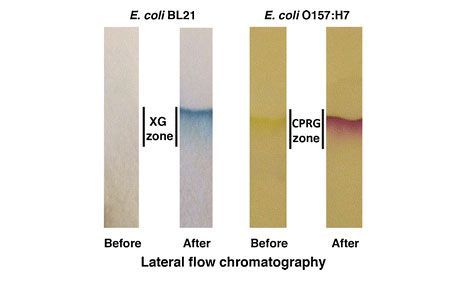
All iLive content is medically reviewed or fact checked to ensure as much factual accuracy as possible.
We have strict sourcing guidelines and only link to reputable media sites, academic research institutions and, whenever possible, medically peer reviewed studies. Note that the numbers in parentheses ([1], [2], etc.) are clickable links to these studies.
If you feel that any of our content is inaccurate, out-of-date, or otherwise questionable, please select it and press Ctrl + Enter.
Rapid test for quick detection of water contamination in bathing places created
Last reviewed: 01.07.2025
The closure of city beaches due to bacterial outbreaks has become a normal summer phenomenon because, until now, water testing methods have not been fast enough to keep up with changing criteria, nor easily accessible enough to test all bodies of water.
Researchers at McMaster have created a quick screening tool that uses a simple cardboard strip to detect the presence of E.Coli bacteria in a water sample within minutes. The new tool could become a bridge between a microbial outbreak and its detection, improving public safety.
Scientists at the Seniter Bioactive Paper Network have created and tested a test strip that can detect potentially harmful levels of E.coli in water instantly and easily, with far greater accuracy than today's mobile technologies.

“E. coli has always been a big problem,” says John Vrennan, a professor of chemistry at McMaster and Canada Research Chair in Bioanalytical Chemistry. “The technologies that have been used to detect bacterial outbreaks are slow and generally immobile because they require growing the culture in a lab, which increases the time between an outbreak and beach closure.”
Bioactive paper is both a novelty and a well-known method, explains Brennan. Since the late 1950s, doctors have used bioactive paper to measure glucose levels in urine. In recent years, its range of applications has expanded dramatically and experts are developing new methods, making the research more competitive.
The new strips contain chemicals that react with bacteria. The chemicals are applied using an inkjet process similar to what you might find in a printer. After 30 minutes of testing, the paper changes color, confirming the presence of E.coli. Different colors correspond to different concentrations and types of germs.

 [
[